The Automotive Trans-Arctic Expedition & RAVENOL: The Burlak All-Terrain Vehicle Plans to Conquer the North Pole
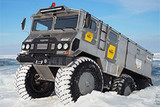
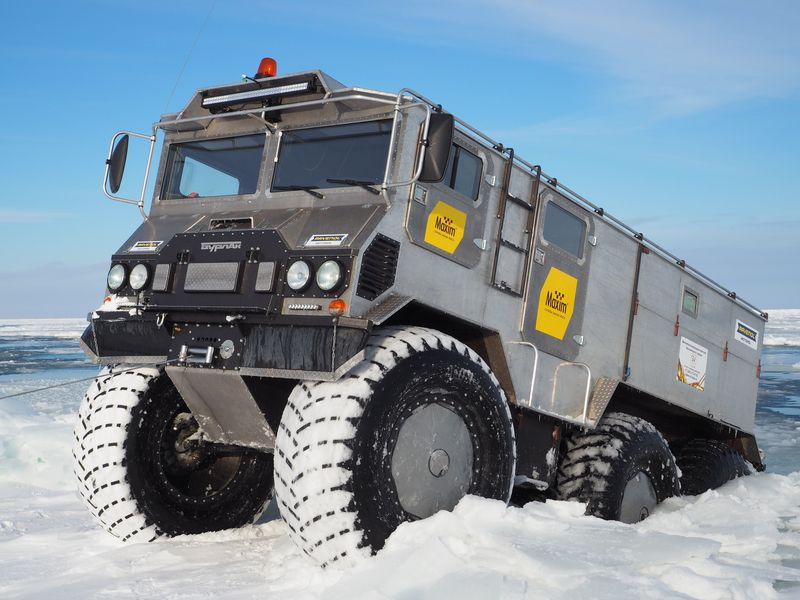
Today you can read about one exciting project! That is the Automotive Trans-Arctic Expedition, a journey to the North Pole being made by eight Russian daredevils in specially adapted Burlak all-terrain vehicles.
The aim of the adventurers is to break the world record set by the Automotive Sea Ice Expedition in 2009. The latest expedition plans to reach the North Pole under its own steam, with no airdrops of fuel or food, and to return to dry land the same way.
Info about the Sea Ice Expedition
The first people to reach the North Pole in wheeled vehicles were the participants in the Automotive Sea Ice Expedition led by Vassily Elagin. The adventurers set off in two Emelya amphibious vehicles from the very tip of the Severnaya Zemlya archipelago and covered 2033 km in 38 hours. They reached the longed-for coordinates on April 26th 2009: 90°00′00″ North. In that previous expedition, the participants returned to the Вolshaya Zemlya by helicopter the same day. The vehicles were left at the North Pole for ever and their fate is unknown.
So who are these daredevils?
The idea for the "Automotive Trans-Arctic Expedition" project came from mechanical engineer and explorer Aleksei Makarov. In 2009 he constructed an all-terrain vehicle called "Makar" in which he and his team travelled right across the North Urals to reach the northernmost point of Eurasia, Cape Chelyuskin. Then, inspired by the record set by Vassily Elagin, Aleksei decided to conquer the Arctic. Based on his own development work and the experience of the Automotive Sea Ice expedition, in 2014 he designed a more advanced vehicle, capable of driving across the snow-covered tundra and travelling across ice and water. In 2015, he indeed succeeded in creating a new type of Arctic vehicle, and his dream of setting a new world record became a reality. He assembled a team of like-minded people and preparations for the expedition began.
What is the vehicle like?
The Burlak is a six-wheeled amphibious vehicle. Access to all its parts and assemblies is from inside the cab, so that the harsh polar conditions will not prevent the team from repairing the vehicles. Because the vehicle has a hermetically sealed body and a propeller, it is able to travel on water and manoeuvre between ice floes. Driving the vehicle is no more difficult than driving a simple lightweight car. The Burlak is different from other all-terrain vehicles because the team learned from the experience of using its predecessors when developing it, and they effectively designed an entirely new vehicle. That makes them certain that their journey to the North Pole will be faster and safer.
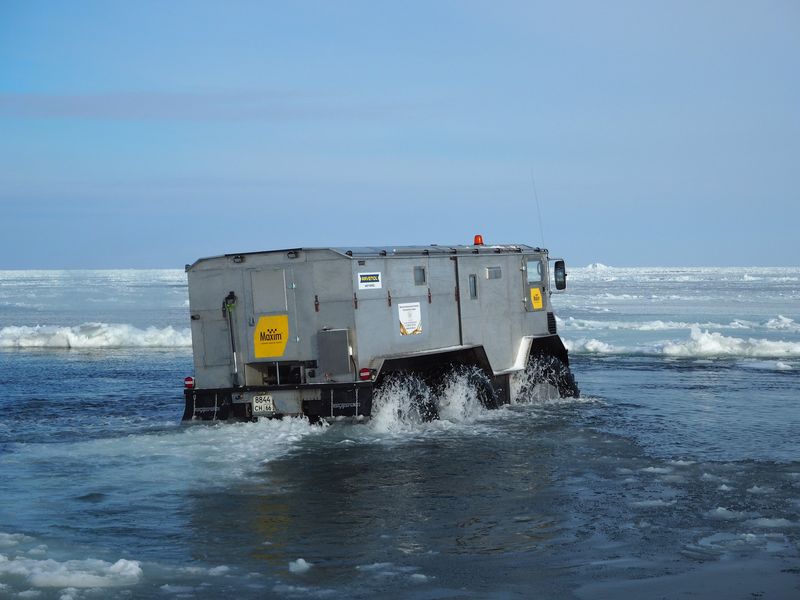
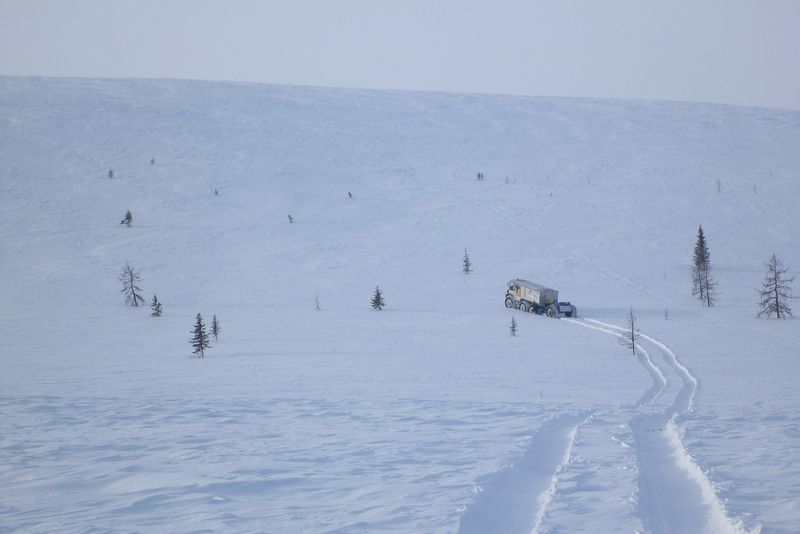
The Burlak was constructed entirely in Aleksei Makarov's workshop in Ekaterinburg. The bodywork was fitted at the end of October 2015 and the final assembly and kitting out of the vehicle began in early November. All the assemblies and parts use lubricants made by RAVENOL, the expedition's technical partner.
Journey to the Kara Sea
The first test trip took place at the end of February 2016, and in March full-scale trials were carried out in the Pre-Polar Urals and the Kara Sea. The test route was completed in 16 days, when the team had expected it to take 3 weeks. They experienced no serious breakdowns in 2800 kilometres. The vehicle's performance lived up to their expectations at every stage of the trial run!
Burlak-2 and plans for the future
After these tests, the team began building a new vehicle. The main structural difference from the prototype was that the engine is mounted further forward. The new design enables more weight to be put on the front wheels. This improves the tyres' grip on the surface and the vehicle's handling when pulling a trailer loaded with fuel and food. A number of other improvements to the design have reduced the vehicle's weight by nearly a tonne, making fuel consumption more economical and travel through crumbling sea ice easier.
Technical specifications
- Toyota 1KD-FTV turbo-diesel engine, generating 170 hp at torque of 360/1800 rpm. The engine is fitted at the front. A Binar engine block pre-heater enables the vehicle to start in sub-zero temperatures.
- Automatic gearbox.
- 2 modes of transmission: uphill 1/1, downhill 1/2.55.
- Disk brakes on the rear and middle axles.
- The steering system has no direct mechanical link but uses a hydraulic cylinder.
- The vehicle has independent, double wishbone, spring suspension. The suspension has 200 mm of travel, allowing road clearance of from 720 to 750 mm depending on the vehicle's load.
- Dual-layer, low-pressure tyres: external diameter — 1700 mm, width — 720 mm, inner diameter — 32 inches.
- Displacement of each wheel is 1200 kg, making a total of 7200 kg.
- Cruising speed on firm ground — 60 km/h at 2650 rpm. Maximum speed — 88 km/h. On water — up to 6 km/h.
- Maximum fuel tank capacity — 360 litres In fuel-saving mode on firm ground, the fuel consumption is about 30 litres per 100 km, but in off-road conditions about 4-6 litres per hour.
- Vehicle length — 6.6 m, width — 2.9 m, height — 3.2 m. Its space frame is made from square-section steel tubes and the base frame is made from No. 50 angle section.
- Unladen weight of the vehicle — 3.7 tonnes, laden weight — 7 tonnes
- The vehicle's body is clad in aluminium 1-2 mm thick. It is insulated with 30 mm thick ISOLON and synthetic felt (carpet).
- The cab is designed for 10 people, with 8 bunks. The kitchen is equipped with gas burners for preparing food, a washbasin, a shower. A device for melting snow using heat from the engine's cooling system allows up to 30 litres of water suitable for drinking to be produced.
- There are 2 stoves in the cabin and two freestanding 2 KW Planar heaters.
- Maximum load capacity without losing buoyancy is up to 2 tonnes.
RAVENOL products used
RAVENOL VST SAE 5W-40 engine oil, RAVENOL ATF Dexron IIE transmission oil, RAVENOL Arctic Green Grease AGG 2, RAVENOL Arctic Tripoid Grease ATG2 with MoS2, RAVENOL LTC COLD CLIMATE -60°C antifreeze.
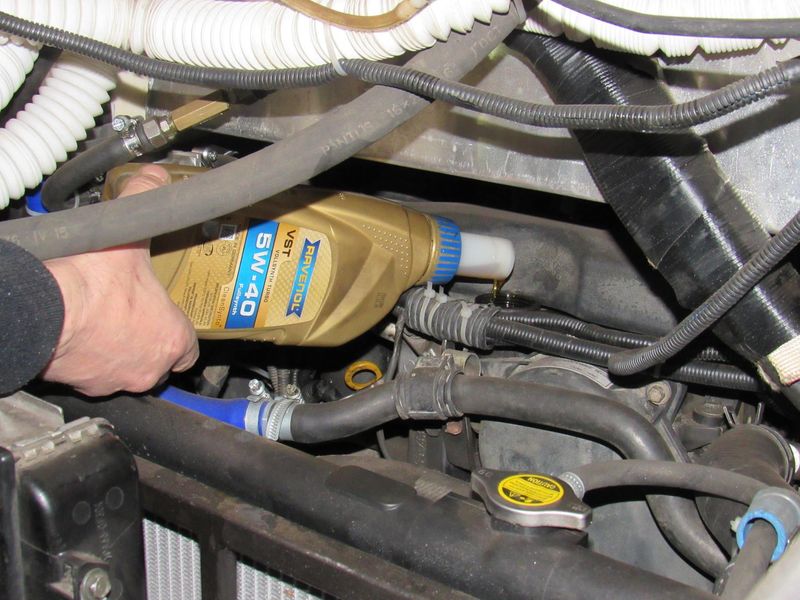
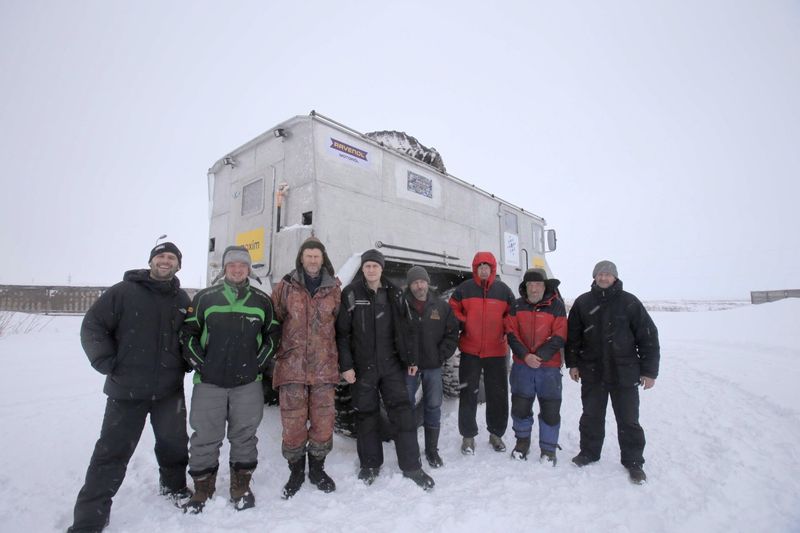
How did similar trials with Burlak-2 on the Kara Sea go? See for yourself here.
Next, the team plans to build a duplicate vehicle. In the event of a breakdown, the parts from the two identical vehicles will be interchangeable. Following construction and testing of the two Burlak vehicles in spring 2018, they will travel to the starting point — the polar station on the Severnaya Zemlya archipelago, but the team will then return home. Then for 2019 the plan is to attempt to conquer the North Pole itself! They expect to complete the journey in both directions in around 1.5-2 months, covering about 100 km per day.
